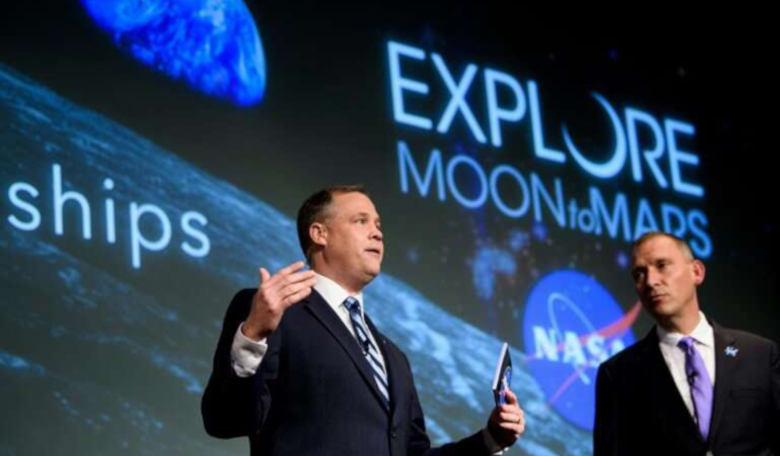NASA’s new lunar landing program, which has dominated headlines in recent months with its back to the Moon campaign by 2024, has been named Artemis, after one of the most widely venerated of the ancient Greek deities and who also just also happens to be Apollo’s twin sister.
What’s more, President Trump has amended his Fiscal Year 2020 budget request to add another $1.6 billion on top of the initial $21 billion Budget Request, to accelerate the space agency’s efforts in returning to the Moon.
These extra funds, said NASA administrator Jim Bridenstine in a video message to agency employees earlier this week, are a down payment ‘that gets us out of the gate in a very strong fashion and sets us up for success in the future.”
The gate that Bridenstine refers to, is the Gateway, the lunar orbital space station that will serve as a base for astronauts making a trip to the Moon and back. Although this injection of funds does not mean that more money will be thrown at the orbital platform to ensure the 2024 goal is achievable, indeed it will be quite the opposite in the short term, as instead the money will help ‘refocus’ on preparing the essential basics needed to support an initial landing. Support for a long-term, crew-tended, multi-module Gateway, as had been NASA's original priority, have now been deferred to 2028.
These essential basics also include funding to the tune of $651 or so, for the agencies Space Launch System mega rocket and the Orion capsule; NASA’s multi-purpose crew vehicle intended to facilitate human exploration of the Moon, and beyond.
So far, so good then, right? Not quite. While the prospect of any additional money to boost the agency's Artemis mission should be a good thing, the source of that funding is proving controversial.
The extra $1.6 million apportioned to NASA, Trump administration officials have confirmed, is coming from monies taken from the Pell Grant Reserve Fund. The Pell grants, which have been offered for nearly 50 years, help US students from low-income families, many of whom are students of colour, to attend college each year. This year more than 7 million students received the awards, which can total as much as $6,095 per student, depending on the household income.
The move to repurpose the money stems from a financially healthy-looking Pell Grant money pot that has had chance to build up reserves following the 2008-2009 Great Recession. With an improving US economy over the last decade, the number of Pell Grant recipients has subsequently declined in recent years.
As such, the re-allocation of the Pell Grant money, say officials, would have no impact on those currently receiving grants. A move that is seen by many as being short-sighted.
“Sure, there is no immediate impact, but what you have done is undercut the stability of a program that’s really critical for helping students afford college,” said Jon Fansmith, director of government relations for the American Council on Education. “This really is an expression of priorities by the administration.”
“Pell Grants help ensure we have a pipeline of talented students, many of whom will become the next generation of scientists and engineers who strengthen U.S. competitiveness in space and all other areas of scientific discovery and innovation,” said President of the Association of Public and Land-Grant Universities (APLU) Peter McPherson.
The request to shift funds from the Pell Grants to the Artemis programme have yet to be approved by Congress, so it does not necessarily mean yet that funding for students with the highest financial need would be affected in the long run.
However, even with a substantial $8 billion surplus, and a continuing favourable future economy, the Pell program could face a budget shortfall by 2024, said Carrie Warick, director of policy and advocacy for the National College Access Network. If some of its surplus is shifted elsewhere, the shortfall could occur sooner.
Even space explorers have weighed in on the news about reallocating funds to support a Moon mission, as former NASA astronaut Jose Hernandez took to Twitter to say, “I’m all for space travel and returning to the moon but not at the expense of education! If the Pell Grant money is a surplus how about increasing the size of grants so college grads don’t graduate with so much debt?”











